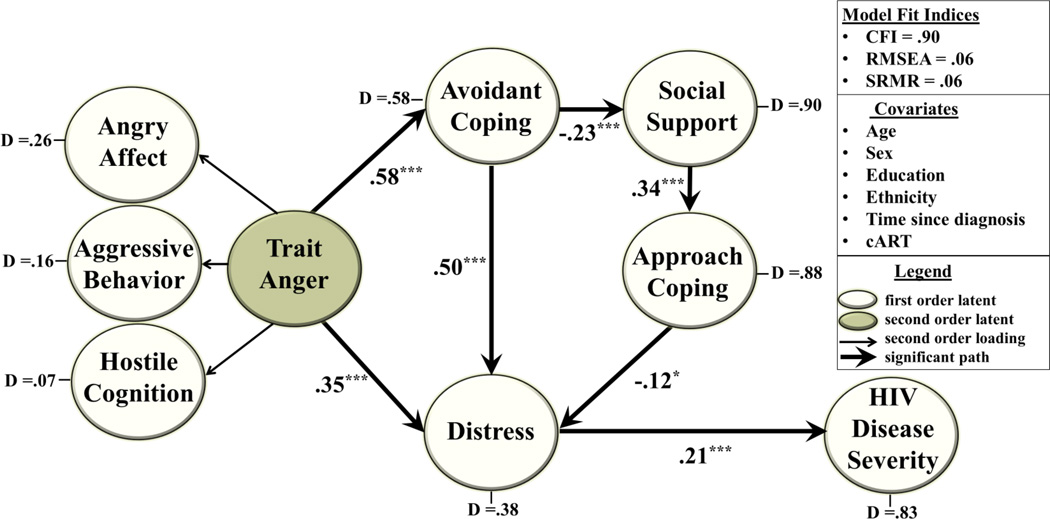Figure 2. Final Model.
The final trimmed model derived using structural equation modeling methodology is depicted. The open ovals represent first-order latent factors and the shaded oval depicts the second-order latent factor, Trait Anger. The model shows that greater trait anger was linked in a direct path with elevated distress and HIV-disease severity, and in two indirect paths via increased avoidance coping, and via increased avoidance coping to decreased social support to decreased approach coping. Path coefficients are standardized β weights. Solid arrows depict statistically significant associations (***p < .001; **p < .01). Non-significant paths are not shown. Disturbance (D) terms reflect the proportion of unexplained variance in each latent factor after accounting for all other latent variables and covariates. The model has good fit to the data as indicated by the fit indices.

